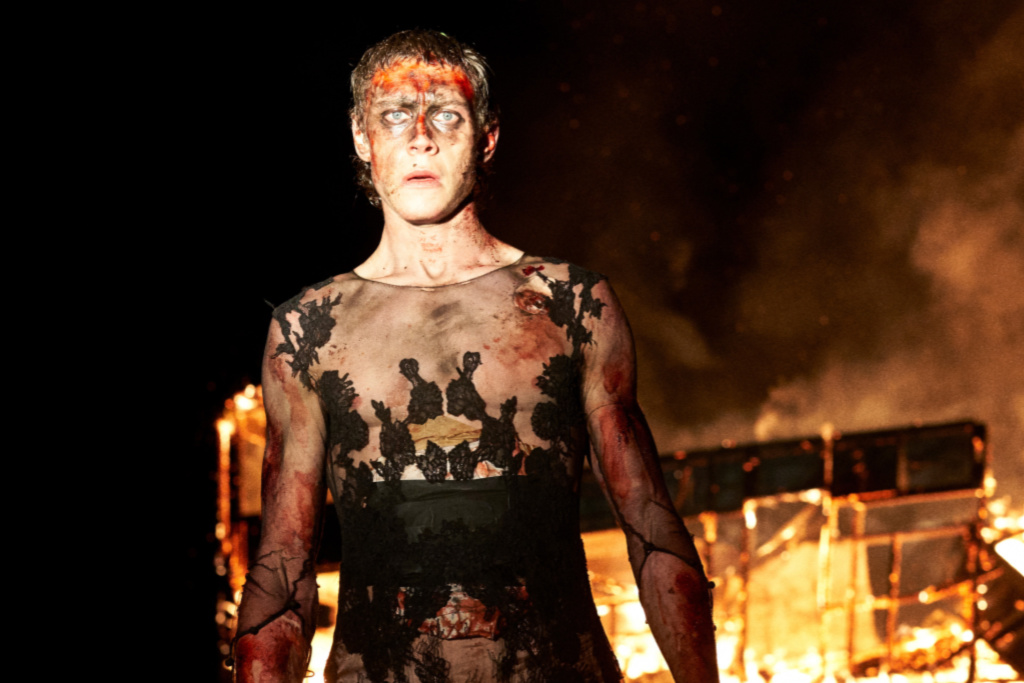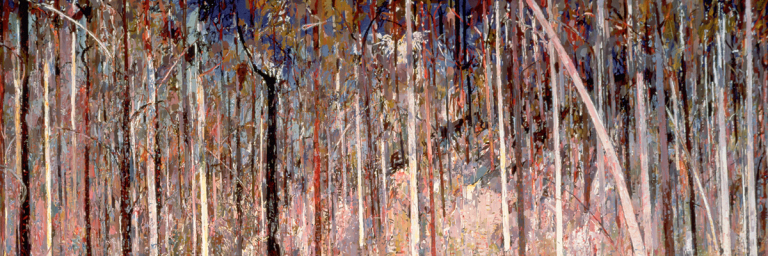Another year, another doom and gloom report for the state of Australian arts.
I’m writing this before the box office wrap up reports have been written, but at a glance, it’s obvious that Australian films genuinely failed to make any impact at all at the Australian box office. The highest grossing Australian film was Ride Like a Girl, the ‘feel good’ horse racing flick that resonated with some audiences to the tune of over $10m, pushing it safely near the top of the highest grossing Australian films of all time. Elsewhere, Top End Wedding and the Storm Boy remake made a sizeable impact with about $5m each.
But these are indie figures, almost chump change in comparison to the big name feature films landing in Australian cinemas. To give an idea of how average this kind of return is, the latest Jumanji flick has made over $20m in Australia alone, and that’s considered a box office dud. That’s after a Boxing Day release. Ride Like a Girl kicked on at the box office for over a month before it managed to make its entire box office haul.
Yet, with over 40 Australian films released theatrically via full run or limited releases, it’s more apparent than ever that Australian films are struggling to gain audience attention. Finger pointing is an easy game to play, with many naysayers saying that the quality isn’t there, or that the market appeal for Australian content doesn’t exist. I can easily point at my own ‘Best Australian Films’ lists as a way of saying that hey, the quality is there, and I can easily engage in further finger pointing where I go on about how the market might be interested if they knew that these films existed.
The hard to swallow truth is the fact that Australian arts is being abandoned by the government, and equally, the moderately archaic ways that cinemas are run in Australia has long rejected the ability for Australian films (which have, by their nature, inherently become ‘small’ entities) to flourish.
I’ll dive into that second point first, because for many, the cinema is still the desired place for their film to screen. If you’re a filmmaker, you’ve likely grown up dreaming of having your film projected in your local theatre, with your hometown coming to see your story being played for all. But the changing theatrical and streaming landscape means that that dream has to be reluctantly discarded.
It’s no secret that it’s becoming a global challenge for films to find footing at the box office when going up against the never-ending onslaught of Disney-content, with other major studios attempting to gain a small slice of that box office glory. In 2019, France had one of their most successful box office years yet, but it was Hollywood content that reigned king. In China, Hollywood films are less successful, with home grown content earning the lions share.
So, this is not a uniquely Australian problem, but Australian cinemas do need to start to adjust to the new world, and quickly. Australian cinema owners and operators are still defending and working to retain the traditional 90-day window release for films, and while the difficult discussion about how to retain the cinema going experience rages on, this restrictive practice needs to be addressed first of all. There was much hot air created over the short theatrical releases given to Netflix titles like The Irishman and Marriage Story, but when they played in the cinemas that would play them, they did well. Locally speaking, The Irishman continued to gain audiences at Perth’s The Backlot Theatre, with some driving for hours to come watch the film. Even when it landed on Netflix, it was still pulling an audience.
This is not an exclusive Netflix issue, and again, it’s not an exclusive Australian issue either. Amazon Studios gave short theatrical runs to Brittany Runs a Marathon and The Report, before shifting them on to their streaming service for all to access. The conditioning of audiences to expect a ‘big screen’ experience means that films like Brittany Runs a Marathon and Marriage Story are less enticing for cinema attending audiences. They’re talkies, drama focused, lacking the same visual theatrics that make up the majority of the blockbusters out there. These films thrived in the seventies and eighties, topping box offices and creating their own buzz, but that was almost forty years ago, and this is now. Audiences expect more from their entertainment, and that includes being delivered a high quality at home on demand.
The golden age of films is over, and we’re now in the golden age of television. For people who want the experience that Marriage Story delivers, they can get that, plus a lot more through shows like The Affair. Or maybe they loved the dark comedy of The Big Short? Well, head on over to HBO for Succession. But, if you’re in Australia, your prime avenue for Australian content is going to be the ABC, Foxtel, or Stan. You’ve got Total Control, or Lambs of God, or No Activity. All well received, all well-loved, and all Australian. No wonder Australian audiences are staying at home.
Which is why the push for that 90-day theatrical window needs to go. It simply isn’t feasible in todays landscape. Given that many small films are gone from screens within a fortnight, or if they’re lucky, a month, it makes little sense to try reject a potential small box office earning at the expense of a longer window. Yes, Disney does create massively restrictive contracts for cinemas wanting to screen their films, which is – again – a global issue, but they also create films that people crave and see over and over again. They are the big earners for cinemas. Blockbusters used to operate as tentpoles, allowing smaller films to exist under the guise of having their financial success or failure being supported by a financially stable film. But, the concept of tentpoles no longer exists, making it harder for smaller films from all around the world to find a footing.
Film festival director Richard Sowada wrote at length about the cinema experience and the future of cinemas back in 2017, asking ‘What’s Wrong with Cinemas?’ In that great piece, Richard suggests that the future of cinemas could be through the support of film festivals. I want to stress, there’s no fear of cinemas disappearing – there’s something unique about that experience – but given the reliance on box office receipts, and how much they factor into what films are made, their existence is still vitally important.

So, we come to the case of Justin Kurzel’s True History of the Kelly Gang, a star studded flick that was poised to potentially bring in some box office glory in 2020, but instead, it’s getting a short 18 day window in cinemas before dropping on Stan on January 26th. I know I’ve just talked about the reduction of the 90-day window, and arguably, Kurzel’s flick fits that mould perfectly, but just under three weeks from cinema to streaming for a major film like this feels… not right.
That 90-day window exists to drive people to cinemas, but 18 days feels too short, too restrictive, making the push to go to a cinema feel irrelevant when the film will be available at home in less than three weeks. If this trend continues for Australian films, then they will start to feel tokenistic, and less Australian audiences will pay to see Australian films in cinemas, causing more films to get lost in the gloop of the overwhelming cinematic shuffle. If this is what’s happening with bigger budget, bigger profile Australian films like Kelly Gang, then what hope do your microbudget films like Hot Mess or Suburban Wildlife have?
When I published my top films of 2019 lists, one of the complaints I received was that I had included films that simply weren’t available to wide audiences. One of my favourite films of 2019 was It All Started with a Stale Sandwich, Samantha Lang’s documentary about public art. It screened for all of about two seconds in theatres around Australia, and it was only because I’m tapped into the Australian film industry that I was aware it existed. Yet, dig even further and you’d be hard pressed to find people who were aware that a third Red Dog film came out, or that Australia had a surplus of exceptional comedies.
Those same theatres that rejected The Irishman are absolutely going to reject True History of the Kelly Gang, forcing these films into niche, boutique cinemas, and maybe that’s where Australian films will flourish, in small arthouse theatres with short runs. But what works for Scorsese may not work for Kurzel and co. There have been countless Australian films that have tried the limited run/one-off screening format and failed, with more than a handful of them giving the format a stab in 2019. Sure, it has worked in the past, with films like The Mule finding moderate success with a unique release, and other Australian films finding success at genre festivals like MonsterFest.
But is Stan the future of Australian cinema? Is this the last frontier that it’ll die on? With the increased presence of Netflix and Disney+ in Australia, the question of quotas is raised once again. The Australian government has stated that they’re going to look at this and will release a paper in ‘early 2020’ in how to best support Australian content going forward. More on that later on.
Marcus Gillezeau wrote for Inside Film in 2019 about how Aussie producers and filmmakers might best tackle the rise of the streaming giants, and in it he alludes to how best to move forward, with large-scale productions being made in Australia. It’s not too dissimilar to the production of Marvel and DC superhero films being made in Australia, but what differentiates the two is how streaming services are more open to having varied stories being told. One just has to look at the massive production of AppleTV’+s Shantaram and Netflix’s Clickbait to see that Australian productions are happening, and they are going to get a wide audience, it’s just happening a little bit slowly.
If you’re tapped into the Australian film discussion on Facebook, then you can’t go a moment without seeing Ron Brown pop up and mention OzFlix, a noble on demand service for Australian films, but depressingly, the discussion about OzFlix rarely comes from anyone other than Ron. It’s a good service, but the reach is low, and unfortunately, the hyper-niche nature of Australian films (I hate saying that, but it’s unfortunately true) means that its market impact is also low.
Fortunately, places like SBS and commercial TV still find homes for Australian films, with Ted Wilson’s Under the Cover of Cloud being a prime example of a top notch Aussie film finding a home on an Australian tellie service.
If we look internationally, we see filmmakers like Jim Cummings working to subvert the theatrical release experience with his self-funded, self-distributed film Thunder Road. Sure, it wasn’t breaking box office records, but he pushed hard and got it out there. Which is where modern filmmakers are faced with a massive challenge compared to the past. Making a film is like running a small business, you have to push hard to make sure people know it exists and to get audiences to see it.
I look at filmmakers like Genevieve Bailey who made one of the most important films of 2019, Happy Sad Man. She travelled the film all around Australia (quite literally) running Q&A sessions at each screening and pushing the word about the film as hard as she could. The social media profiles for the film were alight with posts about where the film was screening, how to watch it, encouraging folks to head along and catch the film while they could.
Then I look at producers like Lauren Elliott, who launched her company Galactic Baby in 2019 and has already helped usher in some ridiculously exciting new talent into the Australian arts landscape, with filmmakers like Alison James (Judas Collar) and Dan and Luke Riches (KGB). The way Lauren is subverting the traditional arts methods of creating ‘content’ is impressive. She’s looking forward and seeing what can be done with the film format, how it can be morphed and changed for the future, and it’s through short films and web series that that is occurring. The bite sized format that these stories are presented helps make them easy to digest. Sure, you’ve consumed a whole series in less than half an hour, but the key thing is that you’ve just engaged with some Australian content.
Then there’s people like Matt Eeles and Jasmine Leivers who are creating a whole new festival specifically dedicated to West Aussie films – WA Made Film Festival. There’s no one more dedicated to the cause of Australian cinema than Matt Eeles, and he’s putting his time and money where his heart is and getting behind it in one heck of an astounding way. It’s people like Matt who will be part of the forefront of the ‘new Australian cinema’ scene.
This is part of the reason that the ‘quota’ conversation feels like surface level redundancy. The Australian film industry isn’t dying. It’s thriving in ways that many probably never expected, with everything from microbudget films, to documentaries, to short films, to web series, all flourishing. The concept of what constitutes an Australian ‘film’ needs to be adjusted, with the scope being widened substantially to encompass all permeations of ‘filmed material’. One can easily envisage a future where television and film and web series all become one, living and thriving under the banner of ‘filmed content’.
Those filmmakers, producers, and festival planners are all working with a core goal in mind – to create, nurture, and support Australian content as best as possible. The pressure of Disney and co is still there, but the existence and vitality of the Lauren Elliott’s, the Matt Eeles’, the Genevieve Bailey’s of the world show that that pressure is not taking a toll. They’re forging forward earnestly, and we need more of those kinds of people.



